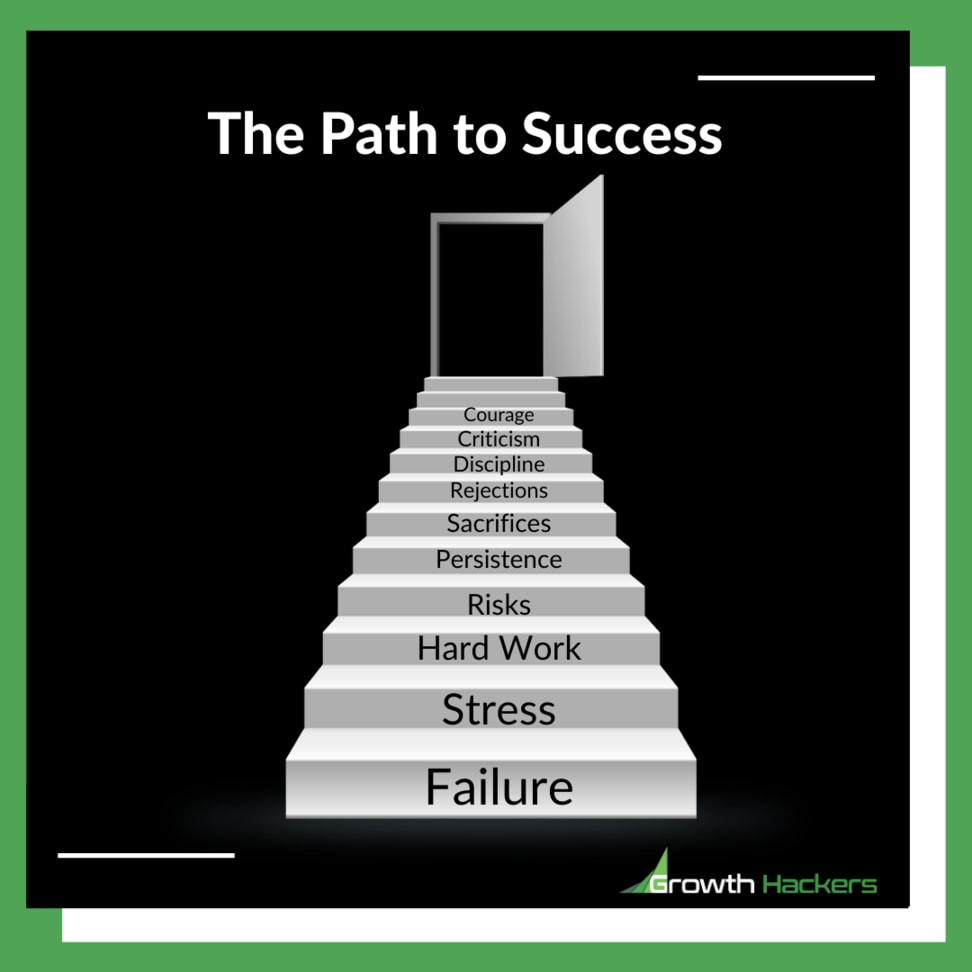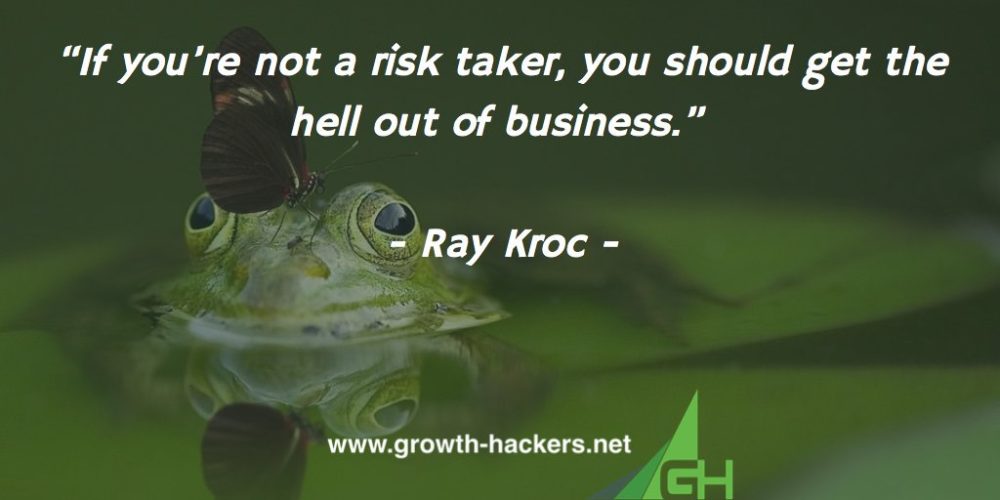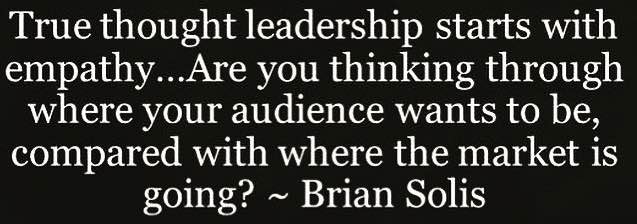It was Albert Einstein who said, “...imagination is more important than knowledge.” In the information age we live in, this might sound like heresy yet it has a valid point. While information and data are integral parts of the business survival playbook, imagination is crucial for it to thrive.
As a growth-oriented company, you know that there’s no marketing silver bullet. Social media alone will not lead you to your customers and take your business to the next level of exponential growth and success. Because growth and high performance are more than just about finding the customers and reaching out to them. A study by the Harvard Business Review found that businesses just like living organisms, go through stages of growth and development.
Understanding the nature of sustainable business growth can mean the difference between thriving and merely surviving. Knowing this is invaluable when it comes to engaging your customers with a captivating message, encouraging your team to get out of their comfort zone, and driving innovative behavior. And while the path to growth is littered with challenges and hurdles, the following seven signposts will guide you through the journey:
As a growth-oriented company, you know that there’s no marketing silver bullet. Social media alone will not lead you to your customers and take your business to the next level of exponential growth and success. Because growth and high performance are more than just about finding the customers and reaching out to them. A study by the Harvard Business Review found that businesses just like living organisms, go through stages of growth and development.
Understanding the nature of sustainable business growth can mean the difference between thriving and merely surviving. Knowing this is invaluable when it comes to engaging your customers with a captivating message, encouraging your team to get out of their comfort zone, and driving innovative behavior. And while the path to growth is littered with challenges and hurdles, the following seven signposts will guide you through the journey:

#1- Design the perfect customer experience
Customer experience should be present at each part of the customer journey: when they visit your site, when they start using your product, etc. When you sign new customers, an effective way to "wow" your new users is by sending impactful onboarding emails. For instance, here are 10 psychological triggers you can use to onboard your users and keep them engaged. Usually in order to improve customer service you ask your customers for feedback or to rate their experience using a form on your website or some form of a rating system. While there’s nothing wrong with that, it often leads to incremental enhancements. This means you become stuck continuing the current system.
On the other hand, if you want to achieve a leap in performance you’ll need to have another approach. Let’s take a post office as an example. If you want to imagine the perfect customer experience in a place like that, then the place would have to be friendly, helpful, full of smiling agents happy to offer assistance.
It’s a place where the customer doesn’t have to wait for long and leaves happy and satisfied. In reality, this is not most people’s experience when going to the post office. But once you have created the perfect scenario you can compare and contrast the ideal one with the current situation. Where are the gaps and how can you address these?
How to apply this to your business: You can start by describing the current customer experience. From there imagine the perfect customer experience you’d like to offer. Now compare and contrast bother experiences to come up with what you need to do to bring that perfect experience to reality.
On the other hand, if you want to achieve a leap in performance you’ll need to have another approach. Let’s take a post office as an example. If you want to imagine the perfect customer experience in a place like that, then the place would have to be friendly, helpful, full of smiling agents happy to offer assistance.
It’s a place where the customer doesn’t have to wait for long and leaves happy and satisfied. In reality, this is not most people’s experience when going to the post office. But once you have created the perfect scenario you can compare and contrast the ideal one with the current situation. Where are the gaps and how can you address these?
How to apply this to your business: You can start by describing the current customer experience. From there imagine the perfect customer experience you’d like to offer. Now compare and contrast bother experiences to come up with what you need to do to bring that perfect experience to reality.
#2- Evaluate failure with new eyes
Perhaps one of the biggest hurdles to reaching the peak of performance has to be the fear of failure. For a manager, this means you might believe that if you can’t achieve your goals than you have failed. As a result, calculated risks are rarely taken and only slam dunk deals would be considered. The problem with this approach is that it leads to incremental growth and a follow-the-leader mentality. This mindset is counterproductive and to break from it you will need to see failure as an opportunity to learn and grow.
This new view takes the negativity and fear of failure out of the work environment and establishes a more positive view of personal and business growth. When you think about it, for you to have a successful business you’ll need to create a culture where everyone is encouraged to continually try new things, sometimes fail, but always push the boundaries of high performance.
How to apply this to your business: Seeing failure in a different way is just one example of how you can change your performance by changing your thinking. Let’s say there’s a chance you might lose your biggest client. Your normal view is: fear of the unknown. But if you change your view too, this might be an opportunity to improve my products and services and reach out to new clients. Then you’ll have a new behavior: I’ll find out what my business is lacking and fix that problem.
This new view takes the negativity and fear of failure out of the work environment and establishes a more positive view of personal and business growth. When you think about it, for you to have a successful business you’ll need to create a culture where everyone is encouraged to continually try new things, sometimes fail, but always push the boundaries of high performance.
How to apply this to your business: Seeing failure in a different way is just one example of how you can change your performance by changing your thinking. Let’s say there’s a chance you might lose your biggest client. Your normal view is: fear of the unknown. But if you change your view too, this might be an opportunity to improve my products and services and reach out to new clients. Then you’ll have a new behavior: I’ll find out what my business is lacking and fix that problem.

#3- Don’t be afraid to take risks
Closely related to the fear of failure is the practice of taking risks. It is a well-known fact that high-performing people tend to take more calculated risks; something they view as an integral part of doing business. Taking more risks as part of the innovative process means that you can gain an edge on your competition. It can also open up new growth opportunities.
Think of some of the major achievements in your life outside of work, didn’t these involve some degree of risk? To become a high-performing employee or manager means applying the same sort of mindset you apply to your personal life to your business career.
How to apply this to your business: Identify all the possible risks around a decision. Determine how you can decrease this risk and what the consequences are if you fail. With this knowledge, you are in a better position to see if the risk is worth taking. The simple practice of making a risk factor explicit also helps you deal with it.
Think of some of the major achievements in your life outside of work, didn’t these involve some degree of risk? To become a high-performing employee or manager means applying the same sort of mindset you apply to your personal life to your business career.
How to apply this to your business: Identify all the possible risks around a decision. Determine how you can decrease this risk and what the consequences are if you fail. With this knowledge, you are in a better position to see if the risk is worth taking. The simple practice of making a risk factor explicit also helps you deal with it.

#4- Develop an experimental mindset
The one thing that separates high performers from other people is that they’re constantly experimenting with new ideas and approaches. Rather than accepting the status quo, they adopt a mindset of continual exploring and experimentation. An experimental mindset encourages you to take more risks and to try new things, knowing that it is only a test.
For example, the award-winning animated movie company Pixar tests most of their new and innovative technologies on their shorter films before applying them to full-length movies. The benefit of continually testing new ideas is that you can see what works and what doesn’t before rolling it out. Remember, these do not have to be big things, but you need to be constantly pushing the envelope.
How to apply this to your business: When you have a problem, then finding and testing a range of new approaches would usually yield a satisfying solution. Say you’re looking for ways to finance and cover your business costs. The best approach is to research online for one that suits your business needs, evaluate the pros and cons of each and choose the one that best addresses your own financial needs.
To keep the experiments you run in an organized manner, you should use a performance planner for your business.
For example, the award-winning animated movie company Pixar tests most of their new and innovative technologies on their shorter films before applying them to full-length movies. The benefit of continually testing new ideas is that you can see what works and what doesn’t before rolling it out. Remember, these do not have to be big things, but you need to be constantly pushing the envelope.
How to apply this to your business: When you have a problem, then finding and testing a range of new approaches would usually yield a satisfying solution. Say you’re looking for ways to finance and cover your business costs. The best approach is to research online for one that suits your business needs, evaluate the pros and cons of each and choose the one that best addresses your own financial needs.
To keep the experiments you run in an organized manner, you should use a performance planner for your business.
#5- Work on your self-talk
If there’s one thing, as a business manager, you could learn from the world of sports, it’s the importance athletes place on developing strong and vibrant self-talk. Changing your self-talk from predominantly negative to more positive is a very powerful way of bringing about a lift in performance. Your self-talk is the private conversation that occurs inside your head.
This self-talk can be both positive (e.g. that was a real improvement) or negative (e.g. that mistake is typical; you are hopeless at this). The important point is that you can choose which one it will be. Being more aware of your self-talk can have an immediate influence on your mood and energy levels.
How to apply this to your business: Be alert to and try to counter your negative self-talk. Something like this might spring to your mind, ‘I’m not as successful as I should be.’ Counter that with the more constructive thought, ‘... my performance is improving; success will come if I keep at it.’ The more specific to the situation your self-talk is, the more beneficial it becomes.
This self-talk can be both positive (e.g. that was a real improvement) or negative (e.g. that mistake is typical; you are hopeless at this). The important point is that you can choose which one it will be. Being more aware of your self-talk can have an immediate influence on your mood and energy levels.
How to apply this to your business: Be alert to and try to counter your negative self-talk. Something like this might spring to your mind, ‘I’m not as successful as I should be.’ Counter that with the more constructive thought, ‘... my performance is improving; success will come if I keep at it.’ The more specific to the situation your self-talk is, the more beneficial it becomes.
#6- Lead with the heart and support with the head
People buy with their heads and their hearts, something that every sports car salesperson knows. No doubt a red sports car has good resale value, but we all know it makes the driver feel younger or more powerful. Hook their heart and engage their brain. Customers will buy from you if your product is of high quality and competitively priced (rational need), if they like and trust you (emotional need), and, more and more often, if they wish to be surprised and amazed (imaginative need).
How to apply this to your business: Combining the emotional, rational and imaginative approaches in your selling proposition will guarantee better results.
How to apply this to your business: Combining the emotional, rational and imaginative approaches in your selling proposition will guarantee better results.

#7- Thrive on an open mind policy
Having your doors open for your team to freely discuss issues that impact on their performance at work is great. But that only works if you have an open mind as well. To listen to your team talk about their issues is one thing, considering their views and input is another.
And if you’re willing to only listen to the ideas that you agree on or the ones that are consistent with the annual marketing plan, you’ll be sending mixed signals to your employees. If the plan isn’t working then maybe the plan itself is wrong and it’s time you got fresh and breakthrough ideas from your employees. An open mind means you actively encourage input from people who have a different take on the world.
How to apply this to your business: Try the LIFT framework. Listen: actively listen to the new idea. Improve: enhance and improve the idea with its creator. Feedback: give honest and objective feedback to the idea. Test: discuss ways to test the idea quickly and effectively.
And if you’re willing to only listen to the ideas that you agree on or the ones that are consistent with the annual marketing plan, you’ll be sending mixed signals to your employees. If the plan isn’t working then maybe the plan itself is wrong and it’s time you got fresh and breakthrough ideas from your employees. An open mind means you actively encourage input from people who have a different take on the world.
How to apply this to your business: Try the LIFT framework. Listen: actively listen to the new idea. Improve: enhance and improve the idea with its creator. Feedback: give honest and objective feedback to the idea. Test: discuss ways to test the idea quickly and effectively.
So, What's the Path to Improved Performance and Increased Business Growth?
To build an adaptable and thriving business is the ultimate leadership challenge. Recruiting a business performance specialist can do wonders in that aspect. You would sometimes find yourself rethinking the type of business you’re in and trying to re-imagine its scope and boundaries. If you define your business too narrowly, you will be limiting your new growth opportunities. But looking at your business with an open mind and fresh eyes, you can avoid the constrictions of a limited perspective and discover more potential growth areas and ways to take your business to where you want it to be.In order to improve your business performance and growth, it's crucial to focus on customer experience. This is really a vital point on your business. It might sound obvious but, unfortunately, not enough companies take consideration of users' feedback.
In business, it's also important to be a risk-taker while developing an experimental mindset.
Growth Hackers is one of the top performance marketing companies, we help startups, SMBs and founders grow their businesses. How? We help them improve their performance by making their products more user-centric. There is no need to focus on a product if you don't focus on users. Let Growth Hackers know about your business and we'll tell you how we can help with product optimization, lead generation, sales and more.





1 Comment
Quite interesting ideas to improve performance. Business is all about taking risks that we usually hesitate. One who does have the courage to do so can become successful. Customer is the king and the focus of any business needs to be there.